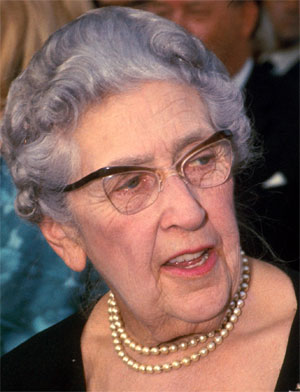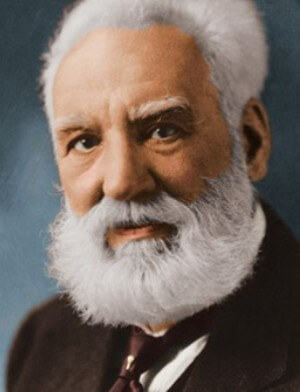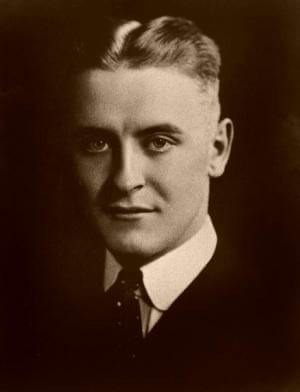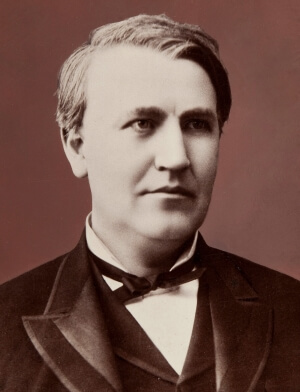- ICCONS,Shoranur, Palakkad (0466)2224869; 6238440945
- ICCONS, Pulayanarkotta,Trivandrum-11 (0471)2440232, 2447729
- icconssrr@gmail.com
- icconstvpm2018@gmail.com

Learning Disabilities - Genetics of Dyslexia
Dyslexia is heterogeneous and genetically complex. However, recent studies have identified potential candidate genes for dyslexia and other language-related traits. Genetics plays a major role in 40-80% of dyslexia, with a maximum role in spelling (70%) and word reading (58%). A child with an affected parent has 40-60% chance of developing dyslexia, the risk further increases if there are other affected members in the family (Stephenson, 1907; Olson et al, 1994; Ziegler et al, 2005).
Twin Studies
Twin studies indicate the role of genetic factors in the familial clustering of dyslexia (Plomin & Kovas, 2005). The first genetic evidence for the high familiarity of developmental dyslexia came in the 1980s from two key twin studies, the Colorado Twin Reading Study and the London Twin Study. In the Colorado Twin Reading Study, the genetic component of phonological processing (75%) was found to be higher when compared to that of orthographic processing (31%) (DeFries et al, 1987). In the London Twin Study, a strong association (75%) was observed for the heritability of spelling and a moderate association (44%) for reading ability (Stevenson et al, 1987). A high heritability for dyslexia was found for boys in a UK-based study (Harlaar N et al, 2005).
According to a review on twin studies of language disability there is a 75% concordance for monozygotic (MZ) twins and 43% for dizygotic (DZ) twins (Stromswold, 2001). The concordance rate for reading disability in MZ and DZ twins was found to be about 70% and 50%, respectively (Oliver et al, 2004).
Linkage studies in dyslexia
Linkage studies have identified dyslexia susceptible genes on specific chromosomal loci. HUGO Gene Nomenclature Committee has recorded nine dyslexia susceptibility loci, DYX1 to DYX9. These include,
- DYX1 on chromosome 15q21 (MIM 127700): In 1983, Smith et al (1983) first noticed the DYX1 locus on chromosome 15q21 based on linkage to chromosome heteromorphisms (LOD score = 3.2) (Smith et al, 1983). This locus was found to be associated with word reading and related phenotypic features (Smith et al, 1983; Grigorenko & Chang, 1997; Schulte-Korne G, 1998 Chapman NH, 2004).
- DYX2 on chromosome 6p21 (MIM 600202): Cardon et al (1994) and Smith et al (1991) first reported significant linkage of DYX2 locus (6p21.33) for dyslexia in sibling pairs and dizygotic twins (Cardon et al, 1994; Cardon et al, 1995; Smith et al, 1991). It has been reported to be associated with phonological processing (Fisher et al, 2002; Kaplan et al, 2002) and orthographic processing (Kaplan et al , 2002; Grigorenko et al, 2003). Linkage disequilibrium mapping of the DYX2 locus resulted in the detection of two strong candidate genes, KIAA0319 and doublecortin domain containing protein 2 (DCDC2), for dyslexia (Cope et al, 2005; Deffenbacher et al, 2004; Schumacher et al, 2006). Recent studies have shown that certain variations in READ1 (Regulator element associated with dyslexia 1), a regulatory element within DCDC2, is associated with dyslexia. Certain variants of READ1 are related to reading problems. Individuals with such variants are, therefore, more likely to develop dyslexia and language impairment (Powers et al, 2013).
- DYX3 on chromosome 2p16–p15 (MIM 604254): Linkage analyses in five families have shown the linkage of DYX3 locus (2p15–p16) with dyslexia (Fisher & DeFries, 2002; Kaminen et al, 2003). Unlike DYX2, this locus is not linked to any specific phenotype dimension.
- DYX4 on chromosome 6q13–q16 (MIM 127700): A susceptible locus DYX4, affecting phonological coding and spelling, has been identified in a large Canadian family on the long arm of chromosome 6q11–q12 (Petryshen et al, 2001).
- DYX5 on chromosome 3p12–q12 (MIM 606896): In a study of 77 US-American families with speech–sound disorder, which involves impairments in phonological processing, DYX5 was reported to be strongly linked (Stein et al, 2004). In another linkage study carried out in a large Finnish family, chromosome 3p12–q13 was found to be responsible for developmental dyslexia (Nopola-Hemmi et al, 2001). A dominant gene, ROBO1 (roundabout Drosophila homolog of 1), was detected as a likely candidate gene in this region.
- DYX6 on chromosome 18p11 (MIM 606616): Genome-wide scan on family samples from Oxford and Colorado showed DYX6 on chromosome 18p11 as a quantitative trait locus affecting dyslexia (Fisher et al, 2002). It was associated with multiple aspects of reading ability (Marlow et al, 2003).
- DYX7 on chromosome 11p15 (MIM 127700): A susceptibility locus, DYX7, containing gene for dopamine D4 receptor (DRD4) on chromosome 11p15.5 was found to be associated with developmental dyslexia (Hsiung et al, 2004).
- DYX8 on chromosome 1p34–p36 (MIM 608995): Three studies have stated the linkage of DYX8 (1p34–p36) to developmental dyslexia (Rabin et al, 1993; Grigorenko et al, 2001; Tzenova et al, 2004). This region was found to be linked to the phonological aspect of dyslexia (Grigorenko et al, 2001; Tzenova et al, 2004).
- DYX9 on chromosome Xp27 (MIM 300509): In a genome scan of a Dutch multiplex family with dyslexia, evidence for linkage to dyslexia was observed at Xq27 which harbors DYX9 (de Kovel et al, 2004).
Other linkage regions in dyslexia
Besides HGNC-listed DYX1–DYX9 regions, linkage for word reading on chromosome 13q12 (Igo et al,2006), and for phonological decoding efficiency on chromosome 2q22 have been reported (Raskind et al, 2005). Bivariate linkage scan on families with reading ability and attention deficit/hyperactivity disorder (ADHD) has shown pleiotropic loci on chromosome regions 14q32, 13q32 and 20q11 (Gayan et al, 2005). In addition, evidence of linkage for reading ability in affected sibling pairs with ADHD has been found on chromosome 10q11, 16p12 and 17q22(Loo et al,2004).
References
Stephenson S. Six cases of congenital word-blindness affecting three generations of one family. Ophthalmoscope 1907;5:482–4.
Olson RK, Forsberg H, Wise B. Genes, environment, and development of orthographic skills. In: Berninger VW, eds. The varieties of orthographic knowledge I:theoretical and developmental issues. Dordrecht, Netherlands: Kluwer Academic Publishers, 1994:27–71.
Ziegler A, Konig IR, Deimel W, et al. Developmental dyslexia—recurrence risk estimates from a German bi-center study using the single proband sib pair design. Hum Hered 2005;59:136–43.
Smith SD, Kimberling WJ, Pennington BF, et al. Specific reading disability: identification of an inherited form through linkage analysis. Science1983;219:1345–7.
Grigorenko EL, Chang JT. An extension of affected-pedigree-member analyses to triads of relatives. Genet Epidemiol 1997;14:1005–10.
Schulte-Ko¨rne G, Grimm T, Nothen MM, et al. Evidence for linkage of spelling disability to chromosome 15. Am J Hum Genet 1998;63:279–82.
Chapman NH, Igo RP, Thomson JB, et al. Linkage analyses of four regions previously implicated in dyslexia: confirmation of a locus on chromosome 15q. Am J Med Genet B Neuropsychiatr Genet 2004;131:67–75.
Cardon LR, Smith SD, Fulker DWet al: Quantitative trait locus for reading disability chromosome 6. Science 1994; 266: 276– 279.
Cardon LR, Smith SD, Fulker DWet al: Quantitative trait locus for reading disability. Science 1995; 268: 1553.
Smith SD, Kimberling WJ, Pennington BF: Screening for multiple genes influencing dyslexia. Reading Writing: Interdisciplinary J 1991; 3: 285– 298.
Fisher SE, Francks C, Marlow AJ, et al. Independent genome-wide scans identify a chromosome 18 quantitative-trait locus influencing dyslexia. Nat Genet 2002;30:86–91.
Kaplan DE, Gayan J, Ahn J, et al. Evidence for linkage and association with reading disability on 6p21.3-22. Am J Hum Genet 2002;70:1287–98.
Grigorenko EL, Wood FB, Golovyan L, et al. Continuing the search for dyslexia genes on 6p. Am J Med Genet B Neuropsychiatr Genet 2003;118:89–98.
Cope N, Harold D, Hill G, et al. Strong evidence that KIAA0319 on chromosome 6p is a susceptibility gene for developmental dyslexia. Am J Hum Genet 2005;76:581–91.
Deffenbacher KE, Kenyon JB, Hoover DM, et al. Refinement of the 6p21. 3 quantitative trait locus influencing dyslexia: linkage and association analyses, Hum Genet 2004;115:128–38.
Schumacher J, Anthoni H, Dahdouh F, et al. Strong genetic evidence of DCDC2 as a susceptibility gene for dyslexia. Am J Hum Genet 2006;78:52–62.
Kaminen N, Hannula-Jouppi K, Kestila¨ M, et al. A genome scan for developmental dyslexia confirms linkage to chromosome 2p11 and suggests a new locus on 7q32. J Med Genet 2003;40:340–5.
Fisher SE, DeFries JC. Developmental dyslexia: genetic dissection of a complex cognitive trait. Nat Rev Neurosci 2002;3:767–80.
Petryshen TL, Kaplan BJ, Fu Liu M, et al. Evidence for a susceptibility locus on chromosome 6q influencing phonological coding dyslexia. Am J Med Genet 2001;105:507–17.
Nopola-Hemmi J, Myllyluoma B, Haltia T, et al. A dominant gene for developmental dyslexia on chromosome 3. J Med Genet 2001;38:658–64.
Stein CM, Schick JH, Gerry Taylor H, et al. Pleiotropic effects of a chromosome 3 locus on speech-sound disorder and reading. Am J Hum Genet 2004;74:283–97.
Marlow AJ, Fisher SE, Francks C, et al. Use of multivariate linkage analysis for dissection of a complex cognitive trait. Am J Hum Genet 2003;72:561–70.
Hsiung GY, Kaplan BJ, Petryshen TL, et al. A dyslexia susceptibility locus (DYX7) linked to dopamine D4 receptor (DRD4) region on chromosome 11p15.5. Am J Med Genet B Neuropsychiatr Genet 2004;125:112–19.
Rabin M, Wen XL, Hepburn M, et al. Suggestive linkage of developmental dyslexia to chromosome 1p34-p36. Lancet 1993;342:178.
Grigorenko EL, Wood FB, Meyer MS, et al. Linkage studies suggest a possible locus for developmental dyslexia on chromosome 1p. Am J Med Genet 2001;105:120–9.
Tzenova J, Kaplan BJ, Petryshen TL, et al. Confirmation of a dyslexia susceptibility locus on chromosome 1p34-p36 in a set of 100 Canadian families. Am J Med Genet B Neuropsychiatr Genet 2004;127:117–24.
de Kovel CG, Hol FA, Heister JG, et al. Genomewide scan identifies susceptibility locus for dyslexia on Xq27 in an extended Dutch family. J Med Genet 2004;41:652–7.
Igo RP, Chapman NH, Berninger VW, et al. Genomewide scan for real-word reading subphenotypes of dyslexia: novel chromosome 13 locus and genetic complexity. Am J Med Genet B Neuropsychiatr Genet 2006;141:15–27.
Raskind WH, Igo RP, Chapman NH, et al. A genome scan in multigenerational families with dyslexia: identification of a novel locus on chromosome 2q that contributes to phonological decoding efficiency. Mol Psychiatry 2005;10:699–711.
Gayan J, Willcutt EG, Fisher SE, et al. Bivariate linkage scan for reading disability and attention-deficit/hyperactivity disorder localizes pleiotropic loci. J Child Psychol Psychiatry 2005;46:1045–56.
Loo SK, Fisher SE, Francks C, et al. Genome-wide scan of reading ability in affected sibling pairs with attention-deficit/hyperactivity disorder: unique and shared genetic effects. Mol Psychiatry 2004;9:485–93.
Powers NR, Eicher JD, Butter F, Kong Y, Miller LL, Ring SM, Mann M, Gruen JR. Alleles of a polymorphic ETV6 binding site in DCDC2 confer risk of reading and language impairment. Am J Hum Genet. 2013 Jul 11;93(1):19-28.
Plomin R, Kovas Y. Generalist genes and learning disabilities. Psychol Bull 2005;131:592–617.
Harlaar N, Spinath FM, Dale PS, et al. Genetic influences on early word recognition abilities and disabilities: a study of 7-year-old twins. J Child Psychol Psychiatry 2005;46:373–84.
DeFries JC, Fulker DW, Labuda MC: Evidence for a genetic aetiology in reading disability of twins. Nature 1987; 329:537– 539.
Stevenson J, Graham P, Fredman G et al: A twin study of genetic influences on reading and spelling ability and disability. J Child Psych Psychol 1987; 28: 229– 247.
Stromswold, K ( 2001 ). The heritability of language: A review and metaanalysis of twin, adoption and linkage studies . Language , 77 , 647 – 723 .
Oliver , B . , Harlaar , N . , Hayiou-Thomas , M . E . , Kovas , Y . , Walker , S . O . , Petrill , S . A. , Spinath, F. M., Dale , P. S. , & Plomin , R. (2004 ). A twin study of teacher-reported mathematics performance and low performance in 7-year-olds . Journal of Educational Psychology , 96 , 504 – 517 .








